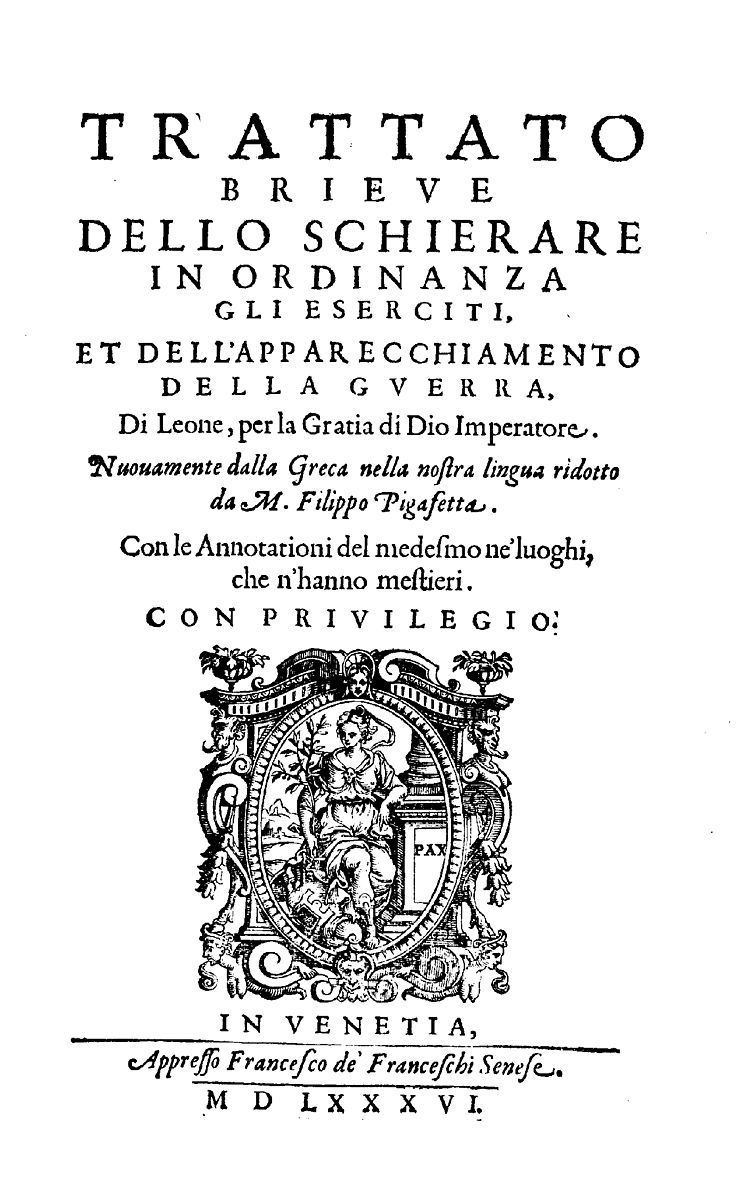The Tactica (Greek: Τακτικά) is a military treatise written by or on behalf of Byzantine Emperor Leo VI the Wise in c. 895–908 and later edited by his son, Constantine VII. Drawing on earlier authors such as Aelian, Onasander and the Strategikon of emperor Maurice, it is one of the major works on Byzantine military tactics, written on the eve of Byzantium's "age of reconquest". The original Greek title is τῶν ἐν πολέμοις τακτικῶν σύντομος παράδοσις ("short instruction of the tactics of war"). The Tactica elaborates on a wide variety of issues, such as infantry and cavalry formations, drills, siege and naval warfare etc. It is written in a legislative form of language and comprises 20 Constitutions (Διατάξεις Diataxeis) and an Epilogue and is concluded by 12 additional chapters, the latter mainly focusing on ancient tactics.
The text of the Tactica is transmitted in several manuscript prototypes, of which the most authoritative date to within a generation of Leo himself. Leo mentions within the Tactica, that Christianity could adopt Islam's doctrine of a "holy war" for its military applications.
An edition with English translation by G. T. Dennis (ed.), The Taktika of Leo VI. Text, Translation and Commentary ([CFHB 49] Dumbarton Oaks, Washington, D.C. 2010), was translated from a 10th-century Florentine manuscript.
PrefaceChapter I - On Tactics and On the GeneralChapter II -On who the General should beChapter III - On how the Decision should be takenChapter IV - On the Division of the Host and the Condition of the OfficersChapter V - On ArmsChapter VI - On the Equipment of Cavalry and InfantryChapter VII - On Drilling Infantry and CavalryChapter VIII - On Military PunishmentsChapter IX - On MarchingChapter X - On Baggage TrainsChapter XI - On CampsChapter XII - On Military PreparationChapter XIII - On the Day before BattleChapter XIV - On the Day of BattleChapter XV - On Besieging a TownChapter XVI - On the Actions after the War is ConcludedChapter XVII - On Surprise AttacksChapter XVIII - On the Studying of Various Heathen and Roman FormationsChapter XIX - On Naval WarfareChapter XX - On Various MaximsEpilogueAdditions from the Sylloge Tacticorum
Chapter XXXII - Their (Ancient Greek) Infantry FormationsChapter XXXIII - Their (Ancient Greek) Cavalry FormationsChapter XXXIV - Their (Ancient Greek) Mixed FormationsChapter XXXV - How the Romans Name the Officers of the Army and their UnitsChapter XXXVIII - Roman Infantry ArmsChapter XXXIX - Roman Cavalry ArmsChapter XLI - Names of Troop ManeuversChapter XLII - Phalanx FormationsChapter XLIII - On Depth, that is the Depth of Infantry and Cavalry Formations, their Length and the Space Occupied by an Infantryman within the Formation, the Cavalryman and on the Interval between them within the Formations and on the Flight of an Arrow.Chapter LIII - What the General Should Do When BesiegedChapter LIV - What Should the General Do When Besieging the EnemyChapter LV - How Should the General Speedily Build a Fort close to Enemy Border Without a Pitched Battle
